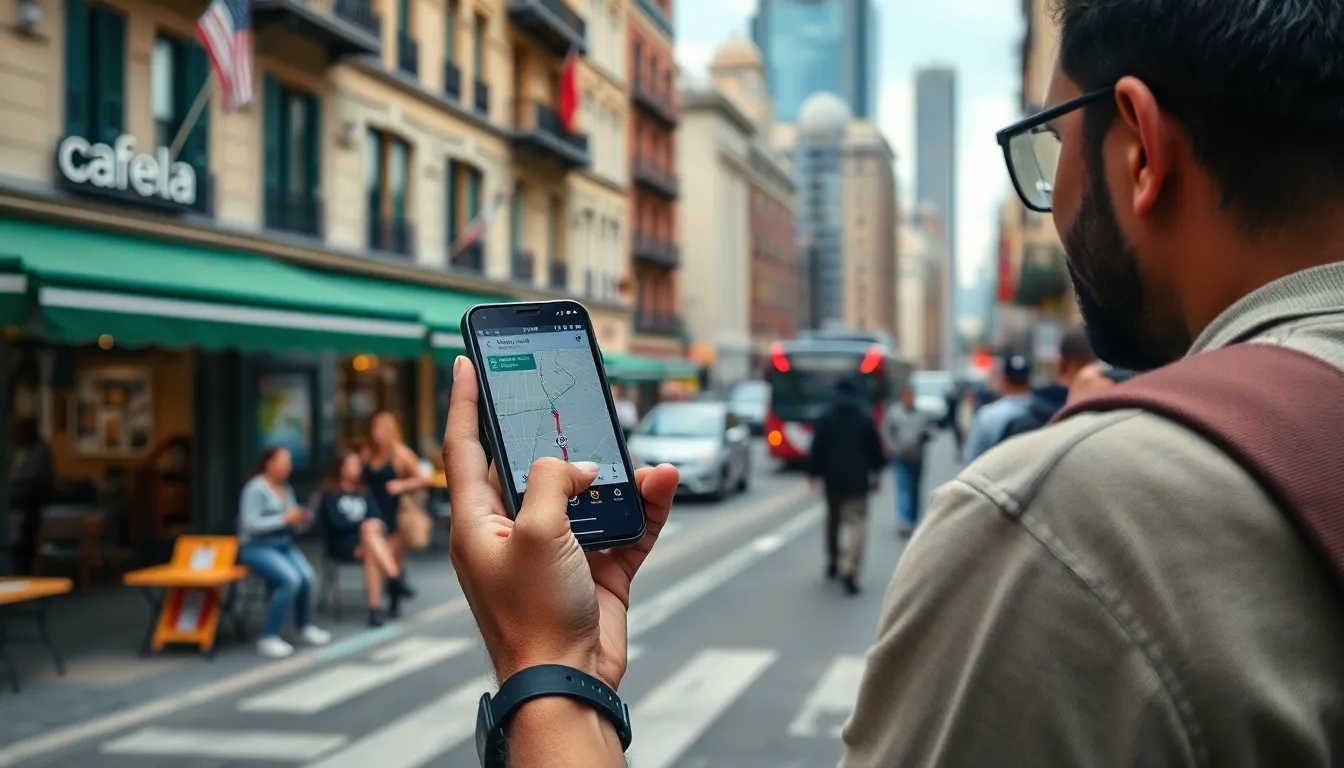In a world where getting lost is as outdated as dial-up internet, mobile navigation technology is the trusty sidekick everyone needs. Gone are the days of pulling out crumpled maps or asking for directions from that one guy who always seems to know the wrong way. Now, with a few taps on a screen, anyone can turn their smartphone into a personal GPS wizard, guiding them through the labyrinthine streets of life.
Overview Of Mobile Navigation Technology
Mobile navigation technology utilizes global positioning systems (GPS) and satellite data for real-time location tracking. This technology enables users to obtain directions, find points of interest, and assess traffic conditions seamlessly. Smartphones have become essential tools for navigation, allowing users to travel with confidence.
Numerous applications support mobile navigation, including Google Maps, Waze, and Apple Maps. Each application offers unique features, such as alternate route suggestions or user-generated traffic updates. The integration of artificial intelligence enhances these applications, providing personalized recommendations based on user behavior.
Location-based services rely heavily on mobile navigation technology. Businesses use this data for targeted promotions and to improve customer reach. In addition, accurate location tracking supports emergency services by enabling faster response times and efficient resource allocation.
Offline navigation capabilities have also evolved. Several apps allow users to download maps or access cached data, ensuring navigation availability in areas with limited service. This feature proves invaluable for travelers in remote locations.
Safety remains a priority with mobile navigation technology. Features such as speed limit alerts and hazard notifications encourage safer driving practices. Additionally, voice-guided navigation minimizes distractions, allowing users to focus on the road.
As technology advances, mobile navigation continues to improve. Innovations such as augmented reality and 5G connectivity promise to enhance user experiences significantly. These advancements ensure mobile navigation remains a vital capability in daily life.
Types Of Mobile Navigation Technology

Mobile navigation technology comprises various systems, each offering unique advantages. Understanding these types helps users make informed choices.
GPS-Based Navigation
GPS-based navigation remains the backbone of mobile navigation. It offers precise location tracking through satellite signals. Users often rely on apps that utilize GPS networks for real-time directions. Popular applications like Google Maps and Waze tap into robust GPS data, providing users with accurate guidance. Integration with smart devices allows for seamless updates, enabling travelers to assess their positions instantly.
Wi-Fi Positioning Systems
Wi-Fi positioning systems enhance location accuracy indoors where GPS signals weaken. Users often benefit from Wi-Fi networks in cafes, malls, or airports. Devices connect to nearby Wi-Fi access points, triangulating location based on signal strength. This method has gained traction due to its reliability in urban environments. Applications leverage Wi-Fi positioning to provide context-aware services, improving users’ experience while navigating complex spaces.
Bluetooth-Based Navigation
Bluetooth-based navigation serves niche applications, particularly in small areas. Beacons installed in locations transmit signals, allowing devices to determine proximity with precision. This technology excels in indoor maps, guiding users through large venues like museums or shopping centers. Retail establishments utilize Bluetooth systems to enhance customer engagement through location-based offers. Users often find Bluetooth navigation intuitive, as it provides personalized routes based on specific contexts.
Key Features And Benefits
Mobile navigation technology offers a range of features that enhance user experience and communication with surroundings. Its essential characteristics contribute significantly to everyday navigation.
Real-Time Tracking
Real-time tracking enables users to identify their location within seconds. GPS technology provides precise positioning, allowing individuals to navigate unfamiliar areas confidently. Traffic data updates help users avoid congested routes, optimizing travel time. Emergency services depend on accurate location tracking for swift responses. Mobile navigation apps continually adjust to changing conditions, ensuring users rely on the most current information. Offline capabilities also support navigation in areas lacking connectivity, maintaining functionality when needed most.
User-Friendly Interfaces
User-friendly interfaces simplify navigation tasks, making technology accessible for all demographics. Visual maps present clear and easily digestible information. Intuitive gestures allow users to interact with maps seamlessly, enhancing their overall experience. Voice-guided instructions provide continuous assistance, letting users focus on the road. Personalization features help tailor recommendations based on user preferences and previous behavior. These aspects improve satisfaction and encourage repeated use of mobile navigation applications.
Challenges And Limitations
Mobile navigation technology faces several challenges and limitations that impact its effectiveness and user experience.
Accuracy Issues
Accuracy remains a significant concern for mobile navigation systems. GPS signals can falter in urban environments where tall buildings create interference. Situations involving heavy tree cover also degrade signal quality, leading to incorrect location tracking. Users may experience frustrating delays in route recalculations when entering zones with weak signals. Inaccurate data can mislead users about traffic conditions, resulting in longer travel times. These accuracy issues undermine trust in the technology, impacting user satisfaction and reliance on navigation applications.
Privacy Concerns
Privacy issues arise as mobile navigation technology collects extensive location data. Users often share their whereabouts through apps, raising concerns about who can access this information. Data breaches and unauthorized sharing of location details amplify these fears. Additionally, targeted marketing based on user locations can feel invasive to many individuals. Businesses rely on this data to promote services, yet users must weigh convenience against potential privacy breaches. Striking a balance between personalization and privacy remains a critical challenge for mobile navigation developers.
Future Trends In Mobile Navigation Technology
Mobile navigation technology is rapidly evolving, driving innovations that shape how users interact with their environments. Upcoming trends include the integration of augmented reality and advancements in artificial intelligence.
Integration With Augmented Reality
Augmented reality (AR) is set to redefine the navigation experience. Users will soon access real-time navigation prompts overlaid on their surroundings, enhancing situational awareness. Applications will utilize smartphone cameras to superimpose directions onto the user’s view. Physical landmarks will guide users better, transforming everyday navigation into an interactive experience. This technology aims to make navigation more intuitive, especially in complex urban environments.
Advancements In AI
Artificial intelligence continues to revolutionize mobile navigation systems. Predictive algorithms will analyze user behavior, optimizing routes based on historical travel patterns. Real-time data processing will adjust recommendations instantaneously, allowing users to navigate efficiently through dynamic traffic conditions. Personalized navigation experiences will emerge, catering to preferences for scenic routes or preferred stops. AI-driven voice recognition will facilitate hands-free navigation, enhancing user safety while driving.
Mobile navigation technology has transformed how people navigate their environments. With the integration of GPS and AI, users can enjoy real-time tracking and personalized experiences that enhance convenience and safety. As innovations like augmented reality and 5G connectivity emerge, the potential for even more intuitive navigation experiences increases.
While challenges such as accuracy issues and privacy concerns remain, the benefits of mobile navigation technology far outweigh these drawbacks. It’s become an essential tool for everyday life, providing not just directions but also valuable insights and recommendations. As technology continues to evolve, mobile navigation will undoubtedly play an even more significant role in shaping how individuals explore and interact with the world around them.





